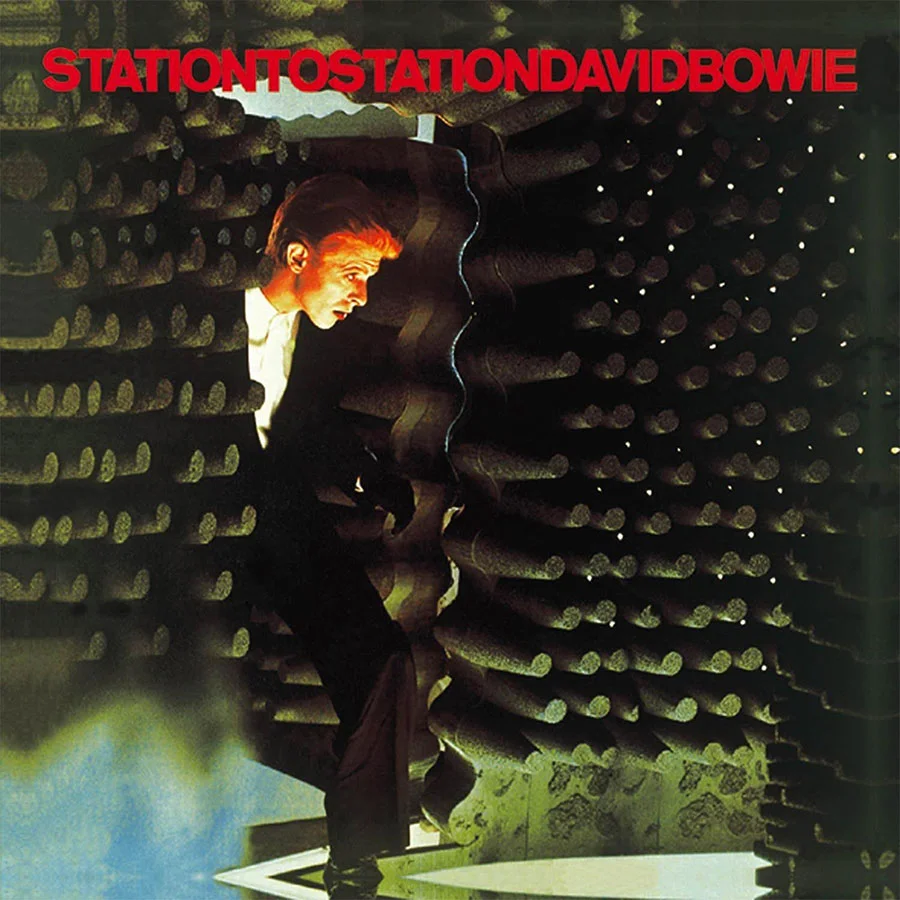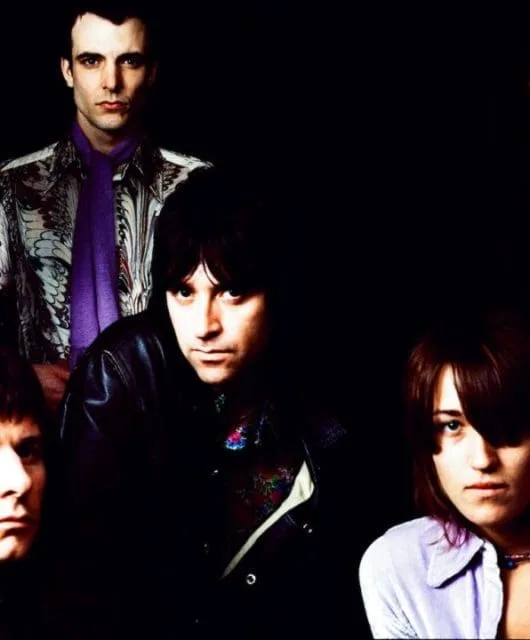Making David Bowie: Station To Station
By Mark Lindores | December 27, 2021

Homesickness, coke and a passion for European electronic music fuelled the emergence of a new Bowie alter-ego, as the Thin White Duke took centre stage for Bowie’s most experimental work yet – Station To Station
As 1975 drew to a close, David Bowie fans were becoming increasingly acclimatised to their hero’s whimsical statements and sensationalist claims in the press, only for him to backtrack on them within weeks or months. This was the case with Station To Station – an album written and recorded just months after Bowie had announced he was giving up rock altogether in favour of a film career.
Having already achieved years of success back home, Bowie’s relocation to the US had proved invaluable to making him a star there. The success of Fame and Young Americans had established him as both a bona-fide superstar as well as a musical maverick.
He was a multifaceted celebrity, celebrated on peak-time TV shows such as The Cher Show and Soul Train and in magazine gossip columns – he’d even starred in his first film.
While to the outside world, Bowie looked like an untouchable rock idol at the peak of his powers, behind the scenes, he was a wreck. Holed up in a Bel Air mansion, he was destroying himself with a colossal cocaine habit and depraved sexual exploits with multiple partners (often at the same time) – plus he had become obsessed with the occult and black magic.
All of which makes it even more remarkable that he managed to produce one of his greatest albums against the backdrop of this chaos.
Read more: Making David Bowie’s “Heroes”
Read more: David Bowie in the 90s
Read more: Making David Bowie’s Let’s Dance
Bowie later admitted that he had no recollection of making Station To Station, and relied on people telling him how it came about and playing recordings back to him for him to formulate a picture of how it came to be.
The first single from the album, Golden Years, had been written in October 1975 and, pre-empting the success of the disco sound, it was a natural progression from the soulful funk of Young Americans. Legend has it Bowie wrote the song for Elvis Presley, but liked it so much he wisely kept it for himself.
As Bowie embarked on the recording of his next album with producer Harry Maslin at the helm, he once again fell into his ritual of working non-stop for days at a time, wired on cocaine.
This was something he said that he did for the sole purpose of staying alert so he could work for longer, though that sometimes had downfalls as, consumed by the minutiae of detail, he often thought he had completed a full song when, in fact, he had spent half a day rearranging the same eight bars and had ultimately produced nothing.
As well as writing new material, Bowie drew from a bank of unused songs which he had written and recorded with a view to using as soundtracks to films which had yet to be made. Inspired by acts such as Kraftwerk and Neu!, the ambient soundscapes were, again, vastly different to what Bowie had done before and would be a foundation for what he would go on to do in the future.
Read more: The alternative David Bowie Top 20 – 1975-’80
Read more: The alternative David Bowie Top 20 – 1981–’93
Describing Station To Station as “a plea for me to return to Europe”, Bowie was influenced chiefly by artists from the UK and Germany. This provided the chilly mood of the album which, when juxtaposed with his emotional intensity, makes for one of his greatest albums, comprising sparse funk, robotic beats, yearning ballads, emotional detachment and devastating alienation.
Just six tracks long, all of which would eventually be released as singles, Station To Station was released in January 1976 and reached the Top 5 in Bowie’s preferred markets, the UK and the US (its No. 3 placing in the latter was his highest-charting album there until 2013’s The Next Day’s No. 2 showing). The album also spawned another new character – the Thin White Duke, a mean-spirited aristocrat Bowie brought to life when he hit the road for the Isolar Tour a week after the album was released.
With the tour, the film and the album (Station To Station’s cover art depicted Bowie in a scene emerging from a spaceship in The Man Who Fell To Earth) all sharing similar themes and an aesthetic, Bowie’s triple threat of offerings added up to one of his most interesting and satisfying eras, both sonically and visually – lighting a creative spark which would truly ignite upon his escape from La-La Land.
David Bowie – Station To Station – The Songs
1 Station To Station
Plagued by insomnia, Bowie had become a voracious reader, with the occult, Nazism, the Kabbalah, numerology, UFOs and conspiracies among his chosen subjects. He was also endlessly playing records by Kraftwerk and Neu! and watching German Expressionist films. Station To Station was an amalgamation of all those things, a 10-minute summation (Bowie’s longest ever track), building from a droning sound replicating a train gathering speed before building to an upbeat track with the warning: “It’s too late”.
2 Golden Years
An extension of the disco/funk of Young Americans, Golden Years was, by Bowie’s own admission, a deliberate effort to chase a hit single based on the success of Fame the previous year. A nostalgic look back on a romantic relationship, both Angie Bowie and Ava Cherry have claimed to be the inspiration for the song. With Bowie’s Soul Train performance (for which he was drunk and had to shoot a second time) serving as its music video, Golden Years continued his run of successes in the US, reaching No 10.
3 Word On A Wing
Stuck in New Mexico, paranoid and depressed, while filming The Man Who Fell To Earth, Bowie wrote a song asking for deliverance and seeking protection from the dark forces at play in his life at the time. Genuinely fearful over occurrences he claimed to have witnessed, Bowie was seriously terrified. “There were days of such psychological terror while making the film that I nearly started to approach my reborn, born-again thing,” Bowie told the NME. “It was the first time I’d really seriously thought about Christ and God in any depth, and Word On A Wing was a protection. It did come as a complete revolt against elements that I found in the film. The passion in the song was genuine – something I needed to produce from within myself to safeguard myself against some of the situations I felt were happening on the film set.”
4 TVC 15
One of Bowie’s trippiest lyrics to date, TVC 15 was inspired by Iggy Pop hallucinating that his girlfriend was being swallowed by the television during a party at Bowie’s house. Bowie took Iggy’s experience and made it into a song about a holographic television, into which the narrator climbs to try and find his girlfriend. The song could also have been inspired by the infamous scene in The Man Who Fell To Earth in which Bowie’s character is transfixed by a roomful of TV sets.
5 Stay
Recorded during what Carlos Alomar described as “a cocaine frenzy” during a mammoth jam session, Stay showcases the tight-knit rhythm section of Alomar, George Murray and Dennis Davis, almost duelling for supremacy on the funky, stuttering track – virtually making Bowie sound like a guest performer on his own song.
6 Wild Is The Wind
Originally a track sung by Johnny Mathis from the 1957 film of the same name, Bowie was inspired to record his version of Wild Is The Wind after hearing Nina Simone perform it. While Bowie later said he considered it one of his finest vocals, Frank Sinatra’s seal of approval after hearing playback of the album at a party convinced him to include it on the final tracklisting. The song was finally released as a single, five years after the album, in 1981, to promote the ChangesTwoBowie compilation.
Did you enjoy this article on the making of Station To Station? Then check out our feature on Scary Monsters (And Super Creeps)






